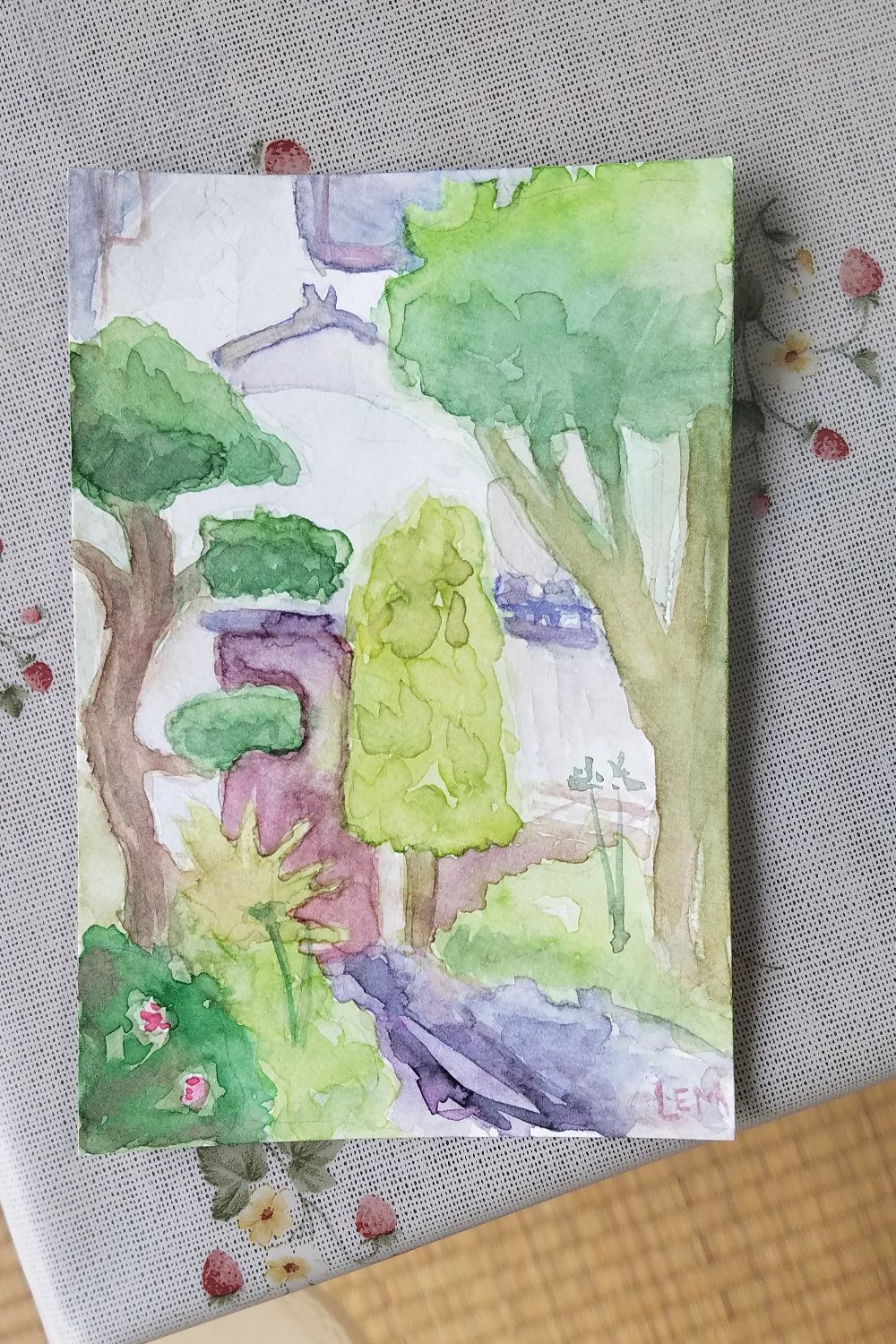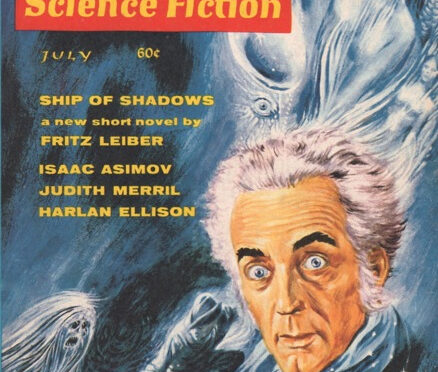
by Gideon Marcus
Nihon, banzai!
In just the last ten years of covering our trips to Japan as part of Galactic Journey, we have watched with amazement as Japan executed nothing short of a miracle. As of this year, the country is now the third largest economy in the world, and "Made in Japan" is no longer a stamp of poor quality. Datsuns are rolling off the assembly line by the thousands and ending up in American showrooms. The sky is dark with industrial smog. It's almost enough to eclipse the left-wing student protests that keep popping up around the nation.
Of course, Japan still has a ways to go, at least domestically. Fully a fifth of its population still is minimally housed, squatting in one-room shacks and waiting for the government to make good on its five year plan to give everyone a decent home.
One family that has no such difficult is the Fujiis, our adoptive parents, who we last visited five years ago! This trip was particularly exciting for reasons I shall detail shortly.
First, a picture of the flower shop on the way to their house. The town is Amagi, an agricultural town that specializes in grapes and persimmons.

And now the estate. It's laid out as a square with an internal garden. What's significant is that it dates back to the 1840s—a time when Japan was still ruled by a Shogun. The estate is essentially a relic, representative of a style that had not changed since Elizabethan times. At a time when so many of these historic residences are being torn down or falling apart, this one stands as a living treasure.



Yuko, our adoptive mom, gave Lorelei a set of Japanese watercolors, which she employed to draw the garden as she saw it.



The architecture of the place, alone, is remarkable. This is construction without nails, all of the timbers custom built and joined together.

What's inside is even more remarkable. The back house used to house a pawn shop. Even the boxes are more than a century old.


This dress was made by a princess.

And this kimono was hocked by a penniless samurai for a little cash. Apparently, this happened a lot.

This is century-old paper, also sold by a samurai. Among the sheets was a paper mock-up of a hakama, the armor the samurai wore.

This is in the house. Yukio, Yuko's husband, was a Kyoto cop before he retired. This relic, however, long pre-dates him—it's the kind of lantern used by police in the 19th Century!

I hope you enjoyed this little excursion into the past. Now for a trip into the future…and regions fantastic!
Leiber of the party
Every summer, The Magazine of Fantasy and Science Fiction dedicates an issue to science fiction luminary. For the July 1969 edition, that fellow is Fritz Leiber. His name is rarely mentioned in the same breath as, say, Heinlein or Asimov, though he is their contemporary (more or less), but when he's good he's very good. Does he make this issue stand out? Let's see!

by Ed Emshwiller
Ship of Shadows, by Fritz Leiber
First up, a brand new piece by the man, himself. It stars Spar and his talking cat, Kim. No, this isn't a fantasy, but a highly personal adventure of an old man living in weightlessness aboard some sort of spaceship. Most of the folks onboard have forgotten about Earth, and there now appear to be eldritch beings aboard—werewolves and vampires—making prey out of those who remain.
Things I liked: the setup is revealed slowly, and it's the first story I've read from the point of view of someone who desperately needs glasses…but doesn't know it. And there is that characteristic Leiber poesy to the writing.
Things I didn't like: the story moves glacially, and I didn't feel like it told anything new. I kept finding myself distracted every two or three pages.
So…three stars, I guess.
Fritz Leiber (profile), by Judith Merril
Famed writer and anthologist (and book reviewer) Judy Merril gushes over her hero, Fritz Leiber. Half biography, half hagiography, half history of SF, it's a worthy piece, especially if you want to be introduced to his early work (and happen, like me, to own a complete set of Unknown).
Four stars.
Demons of the Upper Air, IIX, by Fritz Leiber
A pretty good poem about our first interstellar astronauts, told from the point of view of someone stuck on the ground.
Three stars.
Fritz Leiber: A Bibliography, by Al Lewis
As it says on the tin—no more, and no less.
(no rating)

by Gahan Wilson
To Aid and Dissent, by Con Pederson
It's easy to get in trouble out Mars or asteroids way. To that end, a fleet of sherpas has been bred—literally. These rescue ships, which sacrifice themselves upon landing to deposit air and victuals, comprise a row of linked simian brains inside a spacecraft shell. Think the ape version of The Ship Who… series. Sherpa Bravo one day decides he's sick of being aynyone's monkey and launches a one-primate civil rights revolution.
Clunkily written and nothing special. Two stars.
The Place with No Name, by Harlan Ellison
Norman Mogart was an Entertainment Liaison Agent. Pfui. He was a pimp. When he gets into trouble with the law there's no way out of, he makes a deal with…well…not quite the Devil…and finds himself hip-deep in two of the biggest martyr legends of history.
The first half is excellent and pure Ellison. The second changes the tone so sharply, beware of whiplash. It ends poignantly enough, but the two halves don't quite mesh.
As is usually the case—Ellison consistently produces what are, for me, three-and-a-quarter star stories…round to four stars?
Transgressor's Way, by Doris Pitkin Buck
A knight errant proves to be anything but a knight bachelor—his modus operandi is to shamelessly seduce young maids and then bunk them all in separate towers for him to enjoy at his leisure. But what if they should discover each other?
This story is told in too confusing a shorthand, and it is too frivolous in substance, to earn more than two stars from me.
A Triptych, by Barry N. Malzberg
An interesting, behind-the-scenes look at what goes on in the minds of the three astronauts who get sent in the Apollo. It's not bad, but Barry isn't very well in touch with the actual space program. One telltale: he assumes that the spacemen have little to do between TV shots. In fact, they are kept too busy—indeed, both the Apollo 7 and 10 commanders cut pages out of their assignments because the astronauts were overworked and making mistakes (as anyone who regularly watched coverage of either of these flights should know – Ed).
Three stars.
Two at a Time, by Isaac Asimov
In which the Good Doctor explains how we measure the mass of planets by observing their effect on each other (specifically, the common elliptical focus around which they both orbit). Several pages that could be reduced to one or two lines of formulae, but he looks to be setting something up.
Three stars.
Litterbug, by Tony Morphett
Finally, a fun piece about a fellow named Rafferty who invents a teleporter. Problem is, he can't control where things go, and he can't bring them back. Solution: market the thing as a garbage can.
Problem 2: What happens when aliens at the destination get annoyed at all the litter on their planet?
Three stars.
Lifeless
At least for me, my real life excursion was more interesting than the flights of fancy I took while riding the trains. With the exception of Merril's piece, the rest is pretty forgettable. Well, I suppose you won't forget the Emshwiller cover anytime soon. Anyway, next time I'll be reading F&SF, it'll be in the endotic locale of my home town. May the contents of the August issue be just as different from July's as the Orient is to Southern California.




"Ship of Shadows" is mediocre Leiber. Now, a lot of authors don't come anywhere close to the quality of mediocre Leiber, but I was hoping for something more. As you note, it develops too slowly and I found the ending rushed. I may also have been disappointed, because the title sounded like it would be a Fafhrd and Mouser story.
Merrill's biography was good, but awfully unfocused. She went off on long tangents that had little or nothing to do with the subject. By the time she came back to Leiber, I'd almost forgotten she was writing about him.
No disagreement on "Aid and Dissent." I'd probably put it on the higher end of 2 stars, but that's about it.
Even without his name on it, I could have told you who wrote the Ellison piece. I'd round your score up, but not all the way to four stars. Harlan writes best when he's angry, and there doesn't seem to be anything here that he's particularly upset about.
Buck was clearly trying to invert the Bluebeard legend, but I don't know how successful she was. It feels like it's been a while since we last heard from her, and I'm glad she's still writing, but this wasn't very satisfying.
The Malzberg was too out of tune with what anybody who's paying attention knows about the space program. I couldn't enjoy it at all.
While Asimov's article could have been condensed a bit by the use of formulas, keep in mind he's writing for people who shy at such things. (It's also a typesetting problem for the magazine.) He kept my attention, and we'll see where he's going with this.
"Litterbug" was fine, but a little too drawn out. The attitudes toward the military and federal law enforcement also came across as rather sophomoric to me. You can't have just one or two characters drawn that broadly; it's all or nothing.
Thanks, David! Here's to angry Ellison…
~Gideon
Great cover portrait.
I liked the Leiber pretty well. Best thing in the issue, to me.
A thoroughly defensible statement. Thanks, Vic!
~Gideon